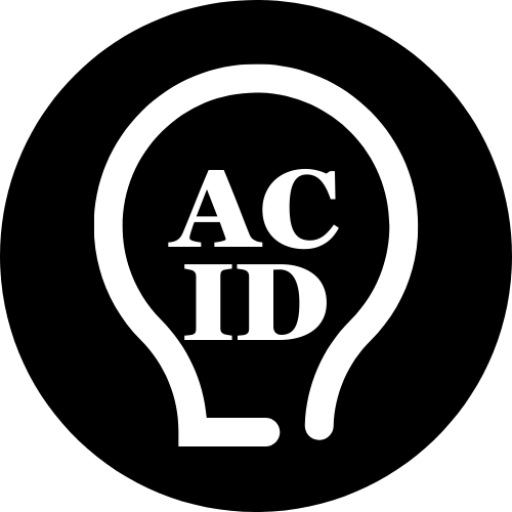Introduction
“The scariest moment is always just before you start.” This quote by Stephen King, the master of horror, perfectly captures the anxiety of facing a blank page. Honestly, who hasn’t felt that way when trying to find the right topic for a blog? Consistently churning out high-quality content can feel like an uphill battle. But what if there was a secret weapon to not only speed up your writing but also enhance its SEO power? Well, the future is here, powered by artificial intelligence! In fact, studies show that businesses leveraging AI tools for content creation have seen a significant 30% increase in output while reducing production time by nearly half. Let’s dive into how AI tools can completely transform your blog writing process in 2025 and give you a serious competitive edge!
Brainstorming and Idea Generation with AI Tools
Coming up with fresh, engaging topics consistently is one of the biggest challenges for content creators. Fortunately, AI for bloggers has revolutionized this initial step of the blog writing process.
Modern AI content strategy tools can analyze thousands of trending articles, social media conversations, and search queries in seconds to identify what your target audience is actually interested in. For instance, platforms like BuzzSumo and Exploding Topics use artificial intelligence content analysis to track content performance across industries, helping you generate blog ideas with AI before topics become mainstream.
Beyond trending topics, AI content gap analysis excels at identifying content opportunities in your niche. These are valuable areas where audience questions aren’t being adequately addressed by existing content. Tools like MarketMuse and Clearscope can analyze your content library against competitor websites, highlighting topics you haven’t covered that could drive significant traffic.
What makes data-driven content particularly powerful for ideation is its ability to suggest creative angles for standard topics. Rather than producing generic content that blends in with everything else online, AI trending topics analysis can help you find unique perspectives by examining successful content patterns and suggesting unconventional approaches based on audience insights AI has gathered.
The beauty of using content intelligence AI at this stage is that it combines analytical insights with creative suggestions, ensuring your content ideas are both strategically sound and creatively engaging.
Outlining and Structuring Your Blog Posts Using AI Tools
Once you’ve selected a compelling topic, creating a logical, well-structured outline is crucial for both reader engagement and SEO performance. This is another area where AI blog post structure tools shine.
Advanced AI outline generators can now produce comprehensive frameworks based on your chosen topic. By analyzing top-performing content in your niche, these tools identify the most effective structural patterns and key points that should be included. For example, if you input “beginner’s guide to cryptocurrency,” an AI writing assistant like Frase or Surfer SEO will suggest main sections covering definitions, types of cryptocurrencies, investment strategies, and security considerations.
The real magic happens when AI headline generators suggest headings and subheadings that incorporate semantic keywords naturally. Instead of simply stuffing keywords, modern content automation tools understand the relationships between terms and concepts, creating a structure that satisfies both search engines and human readers. This approach aligns perfectly with Google’s focus on comprehensive, topic-based content rather than keyword-focused writing.
Furthermore, AI narrative flow analysis can evaluate the logical progression between sections, ensuring your content moves naturally from one idea to the next. Tools like Hemingway Editor and ProWritingAid can identify structural issues like abrupt transitions or logical gaps, helping you create content that guides readers smoothly through complex topics.
By leveraging AI for SEO in your outlining process, you’re essentially building your content on a foundation of data-driven insights rather than guesswork, dramatically increasing the likelihood that your blog post will perform well.
Drafting and Content Creation with AI tools
The drafting phase is where many writers experience the dreaded “blank page syndrome,” but AI writing efficiency tools have become remarkably effective at overcoming this hurdle.
Today’s blog writing software can generate initial drafts based on your outline, providing a solid starting point that you can refine and personalize. Tools like Jasper AI and ChatGPT can produce paragraphs that follow your structural guidance while incorporating relevant information and maintaining a consistent tone. This capability is particularly valuable for sections that require factual information or standard explanations.
Beyond generating content from scratch, AI content optimization excels at helping you improve existing content. When you’re struggling with phrasing or clarity, writing productivity tools can suggest alternative ways to express your ideas. They can transform complex, jargon-heavy explanations into accessible language or add flair to mundane descriptions. This functionality helps maintain reader engagement throughout your post.
However, it’s crucial to understand that human oversight remains essential in the content creation workflow. While AI can generate impressive content, it may occasionally include inaccuracies or miss nuances that a human expert would catch. The most effective approach is to view AI writing tools 2025 as collaborative partners rather than replacements. Use AI-generated content as a foundation, then apply your expertise to verify facts, inject your unique perspective, and ensure the content truly reflects your brand voice.
This human-AI collaboration creates a powerful system that combines the content creation speed of automation with the creativity and critical thinking that only humans can provide.
Optimizing Your Blog Content for SEO with AI Tools
SEO optimization has traditionally been a technical, time-consuming process, but SEO writing assistant tools have transformed it into a more intuitive and efficient workflow.
Modern AI for SEO content generation can analyze your draft and provide real-time optimization suggestions. They go far beyond basic keyword density checks, examining factors like semantic SEO, content comprehensiveness, and competitive positioning. Tools like Clearscope and Surfer SEO compare your content against top-ranking pages for your target keywords, identifying gaps in your coverage and suggesting additional concepts to include.
AI keyword research is particularly effective at optimizing technical SEO elements. It can generate meta description generators that balance keyword inclusion with click-worthiness, suggest AI title tag optimization that maximizes CTR while maintaining keyword relevance, and recommend internal linking opportunities within your existing content library. These technical optimizations, which once required specialized knowledge, can now be implemented with AI guidance even by SEO beginners.
Perhaps most importantly, content quality analysis tools can evaluate the readability and user experience of your content. They analyze sentence length, paragraph structure, and overall flow to ensure your content is accessible to your target audience. Since Google increasingly prioritizes user experience signals, these readability improvements directly impact your SEO performance.
By incorporating latent semantic indexing (LSI) into your SEO workflow, you’re essentially gaining access to insights that would typically require a team of SEO specialists, allowing you to create content that’s optimized for both search engines and human readers.
Editing and Proofreading with AI-Powered Tools
The final polish of your blog post is crucial for establishing credibility and maintaining reader engagement, and AI grammar checkers have revolutionized this stage as well.
Advanced natural language processing (NLP) for content goes far beyond catching basic spelling errors. Tools like Grammarly and ProWritingAid can identify subtle issues like passive voice overuse, repetitive phrasing, inconsistent tense, and even tone misalignments. These sophisticated checks help elevate your writing from merely correct to genuinely engaging and professional.
AI plagiarism checkers have also reached new levels of sophistication. Modern tools can identify not just direct copying but also paraphrased content and uncited information. This capability helps ensure your ethical AI content creation remains original and properly sourced, protecting your reputation and avoiding potential penalties from search engines.
One of the most valuable aspects of AI content analysis tools is their ability to maintain consistency across your entire content library. They can identify when your terminology, formatting, or voice differs from your established style, helping you create a cohesive brand experience across all your blog posts. This consistency builds reader trust and strengthens your brand identity over time.
The efficiency gains from machine learning for content editing are substantial. What might take a human editor hours to review can be analyzed in minutes, allowing you to scale content production without sacrificing quality. This combination of quality improvement and time savings makes AI editing tools indispensable for serious bloggers practicing responsible AI writing.
The integration of AI tools into your blog writing process in 2025 isn’t just a futuristic fantasy – it’s a present-day reality that offers incredible potential. From brainstorming fresh ideas to optimizing your content for search engines, AI can truly supercharge your workflow. However, remember that AI is a powerful assistant, not a complete replacement for human creativity and expertise. Embrace these tools, experiment with their capabilities, and watch your blog writing productivity and SEO soar! Ready to revolutionize your content creation workflow? Explore some of the best AI writing tools 2025 mentioned and start transforming your blog today!
Conclusion
The integration of AI tools into your blog writing process in 2025 isn’t just a futuristic fantasy – it’s a present-day reality that offers incredible potential. From brainstorming fresh ideas to optimizing your content for search engines, AI can truly supercharge your workflow. However, remember that AI is a powerful assistant, not a complete replacement for human creativity and expertise. Embrace these tools, experiment with their capabilities, and watch your blog writing productivity and SEO soar! Ready to revolutionize your content creation? Explore some of the AI tools mentioned and start transforming your blog today!
FAQs About AI Tools for a better blog writing process
Can AI completely replace human writers for blog content?
While AI can automate many aspects of writing, human creativity, critical thinking, and emotional intelligence remain crucial for engaging and nuanced content. Think of AI as a powerful co-pilot!
Is using AI for blog writing considered ethical?
Yes, as long as AI is used as a tool to assist and enhance the writing process, and the final content is original and properly reviewed by a human to ensure accuracy and avoid plagiarism.
Will using AI tools guarantee higher SEO rankings for my blog?
AI can significantly help with SEO optimization by suggesting keywords and improving readability, but high rankings also depend on factors like content quality, user experience, and website authority.
What are some of the best AI tools to get started with for blog writing?
Some popular options include Jasper (formerly Jarvis), Copy.ai, Surfer SEO, and Grammarly’s AI features. It’s best to explore a few to find what suits your needs.





